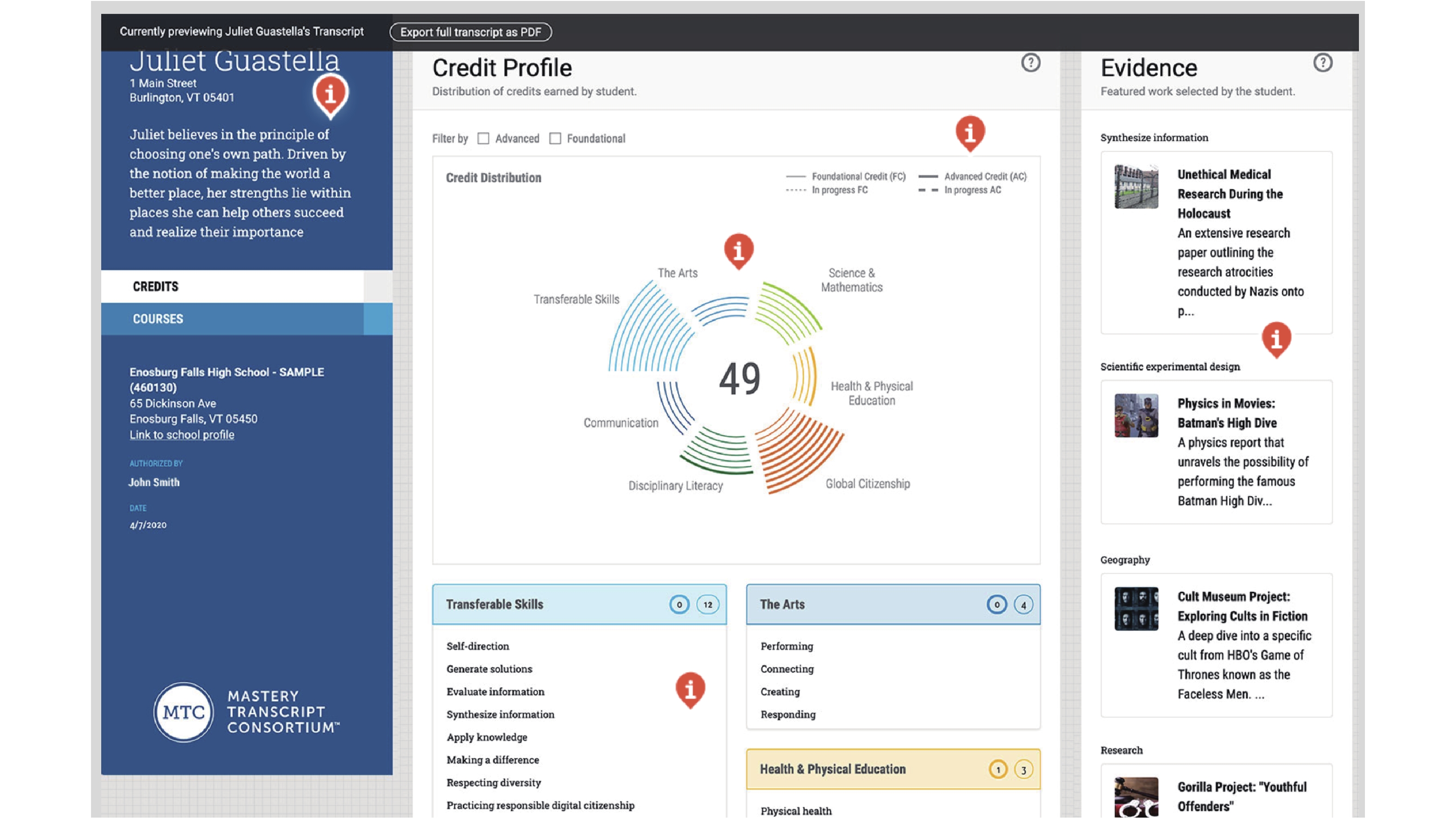Fundamental Issues in Educational Assessment
-
摘要: 本文探讨教育评价必须面对的几大问题,包括教育目标的多重性、教育评价的完整性、教育目标的非兼容性及矛盾性,以及教育目标的个性化等。这些问题是教育评价中不可避免但又必须恰当处理的。因此,教育评价的发展方向应该是更加关注长期的教育性目标,减少对短期的教学性目标评价的依赖;更加注重个性化评价,找出个体学生的价值和发展方向。Abstract: This article discusses a number of challenging issues in educational assessment, including multiplicity and incompatibility of educational outcomes, the desire and need to assess all outcomes, and personalization of educational outcomes. These are issues that educational assessment must deal with properly. Thus, the article argues that the future of educational assessment should focus more on long-term educational outcomes and reduce attention on short-term instructional outcomes. It should also focus on personalizing educational assessment so as to help individuals discover and develop their unique strengths and passions.
-
表 1 TIMSS成绩与信心和享受课程的关系
等级 相关 信心 4 −0.58 8 −0.64 4 −0.67 享受课程 8 −0.75 资料来源:Loveless,2006 表 2 TIMSS 2011数学成绩与信心比较
国家地区 数学分数 信心(%) 看重数学(%) 韩国 613 3 14 新加坡 611 14 43 中国台湾 609 7 13 中国香港 586 7 26 日本 570 2 13 美国 509 24 51 英国 507 16 48 澳大利亚 505 17 46 表 3 PISA 2010成绩与创业活动相关系数
PISA阅读 PISA数学 PISA科学 感知能力(Perceived Capabilities) −0.595** −0.586** −0.608** 新生创业率(Nascent Entre Rate) −0.693** −0.636** −0.678** 新企业拥有率(New Biz Ownsp Rate) −0.371* −0.374* −0.392* 早期创业活动总量(Total Early Stage Entre Activity) −0.658** −0.620** −0.658** 数据来源:PISA 2010和2010国际创业活动研究 -
[1] Australian Curriculum Assessment and Reporting Authority. (2010). A curriculum for all young Australians. Retrieved from http://www.acara.edu.au/verve/_resources/Information_Sheet_A_curriculum_for_all_young_Australians.pdf [2] Baker, K. (2007). Are International Tests Worth Anything?. Phi Delta Kappan, 89(2), 101—104. doi: 10.1177/003172170708900205 [3] Bettinger, E. P., Evans, B. J., & Pope, D. G. (2011). Improving College Performance And Retention The Easy Way: Unpacking The Act Exam. Retrieved from Cambridge, MA: http://www.nber.org/papers/w17119.pdf [4] Bitler, M., Corcoran, S., Domina, T., & Penner, E. (2019). Teacher Effects On Student Achievement And Height: A Cautionary Tale. Retrieved from Cambridge, MA: https://www.nber.org/system/files/working_papers/w26480/w26480.pdf [5] Bonawitza, E., Shaftob, P., Gweonc, H., Goodmand, N. D., Spelkee, E., & Schulzc, L. (2011). The double-edged sword of pedagogy: Instruction limits spontaneous exploration and discovery. Cognition, 120(3), 322—330. doi: 10.1016/j.cognition.2010.10.001 [6] Brunello, G., & Schlotter, M. (2010). The Effect of Non Cognitive Skills and Personality Traits on Labour Market Outcomes. Retrieved from Munich: http://www.epis.pt/downloads/dest_15_10_2010.pdf [7] Buchsbauma, D., Gopnika, A., Griffithsa, T. L., & Shaftob, P. (2011). Children’s imitation of causal action sequences is influenced by statistical and pedagogical evidence. Cognition, 120(3), 331—340. doi: 10.1016/j.cognition.2010.12.001 [8] Dean Jr, D., & Kuhn, D. (2007). Direct instruction vs. discovery: The long view. Science Education, 91(3), 384—397. [9] Duckworth, A. L., & Yeager, D. S. (2015). Measurement Matters: Assessing Personal Qualities Other Than Cognitive Ability for Educational Purposes. Educational Researcher, 44(4), 237—251. doi: 10.3102/0013189X15584327 [10] Durlak, J. A., Weissberg, R. P., Dymnicki, A. B., Taylor, R. D., & Schellinger, K. B. (2011). The impact of enhancing students’ social and emotional learning: A meta-analysis of school-based universal interventions. Child Development, 82(1), 405—432. doi: 10.1111/j.1467-8624.2010.01564.x [11] Emler, T. E., Zhao, Y., Deng, J., Yin, D., & Wang, Y. (2019). Side Effects of Large-Scale Assessments in Education. ECNU Review of Education, 2(3), 279—296. doi: 10.1177/2096531119878964 [12] FairTest. (2018). University Admissions Test Takers 1986—2018. Retrieved from http://fairtest.org/sites/default/files/ACT-SAT-Annual-Test-Takers-Chart_0.pdf [13] Gardner, H. (1983). Frames of mind : the theory of multiple intelligences. New York: Basic Books. [14] Geiser, S., & Studley, R. (2001). UC and the SAT: Predictive Validity and Differential Impact of the SAT I and SAT II at the University of California Retrieved from http://web.stanford.edu/~rag/ed351B/sat_study.pdf [15] Goleman, D. (1995). Emotional intelligence. New York: Bantam Books. [16] Hart, S. C., DiPerna, J. C., Lei, P.-W., & Cheng, W. (2020). Nothing lost, something gained? Impact of a universal social-emotional learning program on future state test performance. Educational Researcher, 49(1), 5—19. doi: 10.3102/0013189X19898721 [17] Hiss, W. C., & Franks, V. W. (2014). Defining Promise: Optional Standardized Testing Policies in American College and University Admissions. Retrieved from Arlington VA: http://www.nacacnet.org/research/research-data/nacac-research/Documents/DefiningPromise.pdf [18] John, O. P., Robins, R. W., & Pervin, L. A. (2008). Handbook of personality : theory and research (3rd ed.). New York: Guilford Press. [19] Kapur, M. (2016). Examining Productive Failure, Productive Success, Unproductive Failure, and Unproductive Success in Learning. Educational Psychologist, 51(2), 289—299. doi: 10.1080/00461520.2016.1155457 [20] Klahr, D., & Nigam, M. (2004). The equivalence of learning paths in early science instruction: Effects of direct instruction and discovery learning. Psychological Science, 15(10), 661—667. doi: 10.1111/j.0956-7976.2004.00737.x [21] Kobrin, J. L., Patterson, B. F., Shaw, E. J., Mattern, K. D., & Barbuti, S. M. (2008). Validity of the SAT® for Predicting First-Year College Grade Point Average. Retrieved from New York: http://research.collegeboard.org/sites/default/files/publications/2012/7/researchreport-2008-5-validity-sat-predicting-first-year-college-grade-point-average.pdf [22] Levin, H. M. (2012). More Than Just Test Scores. Prospects: The Quarterly Review of Comparative Education, 42(3), 269—284. doi: 10.1007/s11125-012-9240-z [23] Lewontin, R. (2001). The Triple Helix: Gene, Organism, and Environment. Cambridge, MA: Harvard University Press. [24] Loveless, T. (2006). How Well Are American Students Learning? Retrieved from Washington DC: http://www.brookings.edu/~/media/Files/rc/reports/2006/10education_loveless/10education_loveless.pdf [25] Mastery Transcript Consortium. (2020a). Key Features of the MTC Mastery Transcript®. Mastery Transcript Consortium. Retrieved from https://mastery.org/what-we-do/mastery-transcript/ [26] Mastery Transcript Consortium. (2020b). Mastery Transcript Consortium. Mastery Transcript Consortium. Retrieved from https://mastery.org/ [27] McGaw, B., Louden, W., & Wyatt-Smith, C. (2020). NAPLAN Review: Final Report. Retrieved from https://naplanreview.com.au/__data/assets/pdf_file/0004/1222159/2020_NAPLAN_review_final_report.pdf [28] OECD Better Life Initiative. (2017). How’s Life? 2017: Measuring Well-being. Retrieved from Paris: http://www.keepeek.com/Digital-Asset-Management/oecd/economics/how-s-life-2017_how_life-2017-en-.WiFqrrQ-fOQ#page1 [29] Partnership for 21st Century Skills. (2007). Framework for 21st Century Learning. Retrieved from http://www.21stcenturyskills.org/documents/frameworkflyer_072307.pdf [30] Peterson, P. L. (1979). Direct Instruction: Effective for What and for Whom. Educational Leadership, 37(1), 46—48. [31] Reiss, S. (2000). Who am I? : the 16 basic desires that motivate our behavior and define our personality. New York: Jeremy P. Tarcher/Putnam. [32] Reiss, S. (2004). Multifaceted Nature of Intrinsic Motivation: The Theory of 16 Basic Desires. Review of General Psychology, 8(3), 179-183. Retrieved from http://sitemaker.umich.edu/cognition.and.environment/files/reiss-intrinsic-mot.pdf [33] Ridley, M. (2003). Nature via nurture : genes, experience, and what makes us human (1st ed.). New York, N.Y.: HarperCollins. [34] Sternberg, R. J. (1988). The triarchic mind : a new theory of human intelligence. New York, NY: Viking. [35] The European Parliament, & The Council of the European Union. (2006, December 12, 2006). Recommendation of the European Parliament And of the Council of the European Union on Key Competences for Lifelong Learning. Retrieved from http://eur-lex.europa.eu/LexUriServ/site/en/oj/2006/l_394/l_39420061230en00100018.pdf [36] Tienken, C. H. (2008). Rankings of International Achievement Test Performance and Economic Strength: Correlation or Conjecture? International Journal of Education Policy & Leadership, 3(4), 1−15. Retrieved from http://journals.sfu.ca/ijepl/index.php/ijepl/article/view/110/44 [37] UNICEF. (2020, August 24). ‘What will a return to school during the COVID-19 pandemic look like?’. UNICEF. Retrieved from https://www.unicef.org/coronavirus/what-will-return-school-during-covid-19-pandemic-look [38] Wigelsworth, M., Lendrum, A., Oldfield, J., Scott, A., ten Bokkel, I., Tate, K., & Emery, C. (2016). The impact of trial stage, developer involvement and international transferability on universal social and emotional learning programme outcomes: a meta-analysis. Cambridge Journal of Education, 46(3), 347—376. doi: 10.1080/0305764X.2016.1195791 [39] Zhao, Y. (2012). World Class Learners: Educating Creative and Entrepreneurial Students. Thousand Oaks, CA: Corwin. [40] Zhao, Y. (2016a). Counting what counts : reframing education outcomes. Bloomington, IN: Solution Tree Press. [41] Zhao, Y. (2016b). Numbers Can Lie: The Meaning and Limitations of Test Scores. In Y. Zhao (Ed.), Counting What Counts: Reframing Education Outcomes (pp. 13−30). Bloomington, IN: Solution Tree. [42] Zhao, Y. (2018a). Personalizable Education for Greatness. Kappa Delta Pi Record, 54(3), 109—115. doi: 10.1080/00228958.2018.1481645 [43] Zhao, Y. (2018b). Reach for Greatness: Personalizable Education for All Children. Thousand Oaks, CA: Corwin. [44] Zhao, Y. (2018c). The Rise of the Useless: the Case for Talent Diversity. Journal of Science Education and Technology, 1—7. [45] Zhao, Y. (2018d). What Works May Hurt: Side Effects in Education. New York: Teachers College Press. [46] Zhao, Y. (2020). Another education war? The coming debates over social and emotional learning. Phi Delta Kappan, 101(8), 42—48. doi: 10.1177/0031721720923791 -






 下载:
下载:
